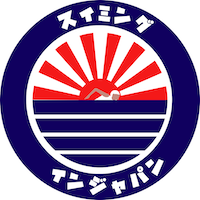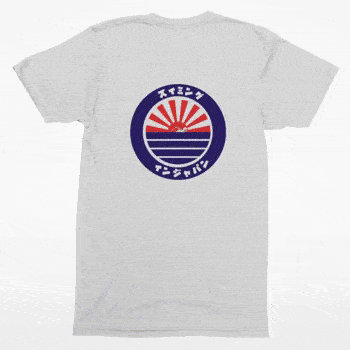Japan is famously a land of volcanoes, typified by the famous silhouette of enduring national icon, Mount Fuji.
All that seismic activity warms up the water, making an archipelago of natural hot springs, or as they are known here, onsen. And while of course, the first image you have may be of rustic, remote and distant mountain settings, the good news is that there are so many even within Tokyo’s city boundaries. Here’s a roundup of 5 of the most unique!
Mountainside Newcomer : Keio Takao
Mount Takao (高尾山, AKA Takao-San) is a 600 metre peak surrounded by natural wonder: flora, fauna (including monkeys and wild boar), and breathtaking views from the top - of both Mt. Fuji and the Tokyo-Kawasaki-Yokohama megapolis, in a few dollars and well under an hour’s travel from Shinjuku. Up the mountain there’s also a beautiful temple complex dating back well over 1000 years.
Much more recently, the Keio Line Station giving access to the mountain has been renovated, with gorgeous wood-based designs by international superstar architect Kuma Kengo, no less. The redesign also brought us the beautiful Keio Takao-san Onsen Gokurakuyu (京王高尾山温泉極楽湯). It might seem small from the outside but inside it’s a huge space, and beautifully formed. It’s really got everything you can hope for in a classic mountain onsen experience in any of the more distant, famous onsen spots of say, Hakone or Gunma. There are a range of pools in different temperatures, some pretty mild. The water in a couple of pools is a nice, alkaline, milky white which feels great for the skin.
It’s not the most rustic perhaps, with lots of television in the sort of canteen food court, but with post-bath beer, soba and tatami to lay on with some variety shows, it’s a great break from the city.
Classic Tokyo Bathhouse Plus : Musashi Koyama Onsen
Musashi Koyama is an area typical of the more outlying little towns that make up tokyo city. It’s in Shinagawa-ku but not too far from Meguro. Being a classic little town in Tokyo means the usual classic little features, but Musashi Koyama is far from everyday.
There’s an impressive shopping street, which at nearly a kilometre is the longest covered shopping arcade in Japan (in the distant past it was called ‘the largest in the Far East’!). It’s got a little bit of everything. If you prefer a bit more of an authentic showa-era working class selection than the tourist traps and generic malls you’ll be more than satisfied.
Time was when all neighbourhoods in Tokyo and around would have at least one sento. Before it was common to have a household bath this is where locals could go to get clean. Rather than volcanic spring, these would often contain regular old water, flame-heated as by Kamaji in the popular bathhouse-based Studio Ghibli movie Spirited Away (which in Japanese is called Sen to Chihiro no Kamikakushi).
Often with designs modelled on temples, the sento was seen as a sort of temple for cleaning one’s body. Sadly, every year we lose more of them due to structural neglect, owners passing away, and lack of interest. Some sento, however, rather than being knocked down have been renovated and modernised, resulting in new life being breathed into places that may otherwise end up demolished. Shimizuyu (武蔵小山温泉 清水湯) is one fine example of such a place. When you arrive there’s an airy, wood-fitted room with bamboo stools, onsen eggs (boiled in the waters) for sale and a TV for relaxing in front of post bath. The staff are very friendly and there’s the feeling you’re being taken good care of by a generations old sento family.
The waters here are mostly yellow-black, and come from 200 metres below, its a mineral-rich spring and good for softening your skin. There are rotenburo (outdoor baths) of brown, iodine-rich water with a plethora of health-giving qualities.
And on top of all this it’s an onsen with sento prices, in the heart of Tokyo, what’s not to like?
Most Dramatic : Jinata Onsen
Tokyo’s own set of paradise islands, Izu Shichito have so many things going for them, but Shikinejima might just have the most unique setting for an onsen anywhere in the metropolitan area, or indeed, anywhere.
The dramatic sulphuric, steaming red rocks of Jinata Hot Spring (地鉈温泉) look on arrival like the gates of hell have opened, and indeed it can be a dangerous place if you’re not careful. Every day the tide comes in and brings cooling seawater into this collection of bubbling rock pools, several of which are large enough to share with a few friends. Once the waters mix the temperature is safe for bathing - at low tide you could get seriously burnt so be careful.
One of the many things going for this ocean paradise is the neighbouring sea to plunge into when you get too hot. There’s a nice rock for clambering up and jumping from, and when you get too cold simply take another bath.
The spring is well-renowned but often quiet aside from sightseers. It’s accessed via a specially made path which was laid down by some locals. The night onsen here can be very special (and popular), but do be careful. You’re a long way (and helicopter ride) from the Emergency Room.
The Theme Park : Odaiba Tokyo Oedo Onsen
Not much chance of danger over at Oedo Onsen Monogatari (東京お台場 大江戸温泉物語). Slap bang in the middle the artificial island of Odaiba.
Odaiba in places seems like something of a shadow of what the planners had in mind at the height of the bubble, but this onsen theme park gives a taste of how things might have been, or even, how things were at the height of the economic miracle. Billing itself as “Onsen-Entertainment” it’s a huge space, with beautiful garden footspas, a range of indoor and outdoor baths, and a recreation of a ye olde time lantern lit Edo “Festival mall”. All visitors can wear complimentary yukata for the duration of their stay, with other selling points including fortune telling and “throw a ninja star”!
As much as it’s tempting to be critical of a place like this there’s actually a lot to like. Sure, it’s full of tourists, but it’s great fun. What’s more, an overnight stay is very reasonably priced. On a budget stay in Tokyo, compare his wonderful place of dressing up in traditional gear, bathing, eating, drinking and lazing around on comfortable tatami and reclining chairs (or slightly more expensive proper bedroom facilities) to the other options of a capsule or a manga kissa, and it’s surely a no brainer. Hang up your hang ups and join in the fun!
The Posh One : Times Spa Resta
Our final choice will keep you in that bubble mood, splashing out on champagne, hairspray and hitting the discos of Roppongi!
Ikebukuro might not be the first place that springs to mind when you are looking for a high-class onsen/spa, but when you’re in the mood for a 12th floor vantage point of the city with your bath, look no further than Times Spa Resta (タイムズ スパ・レスタ). It’s pricey, and arguably excessively so when there are some nearby competitors offering baths for a fraction of the price, but it’s also fun, and open all night until 9am. It’s got a range of beautiful baths, including the mineral-heavy white water, bubble spa plus pampering massage and more.
The restaurants and bars have large windows to gaze out at the city lights, you can sleep in designated peaceful areas, wake up and bathe and drink some more.
This one reminds us that the whole point of onsen is to relax. Life in Tokyo can be stressful. What better way to escape it all than jumping in a time machine and making your own Daryl Hannah movie, eh?
Note
With so many onsen in Tokyo, the above list is of course not by any means exhaustive, but hopefully gives an idea of the range there is to choose from. If it’s your first time, think about what it is you want from your experience before you choose a place, there is truly something for everyone.
Ps Most onsen are not mixed bathing and require you to be naked, with no excuses. If this makes you uncomfortable, the last two featured here do have mixed bathing options with swimwear, and it’s normal to wear your swimwear at Jinata’s sea onsen … but really, don’t worry, you’ll soon forget all your worries once you’re in.
Pps. Most places are pretty strict about tattoos and will have warning signs at the entrance. Some Pharmacies and Drugstores sell large skin coloured patches to cover them, rumour has it that the rules may relax in time for the Olympics but don’t count on it, in Japan change is slow.













